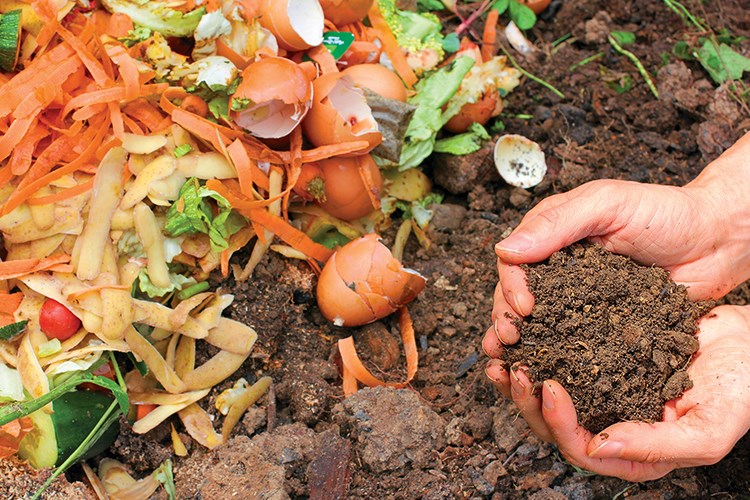No. It doesn’t mean grow- ing lasagna!

Lasagna gardening is a no- dig, no-till organic gardening method that layers organic materials to cook down over time, reaping nutrient-rich, fluffy soil.
The best part: it’s easy. You don’t have to remove sod and weeds. In fact, you don’t have to work the soil at all.
Also known as sheet com- posting, lasagna gardening is great for the environment, be- cause it uses yard and kitchen waste.
The first layer consists of either brown corrugated cardboard or three layers of newspaper laid directly on top of the grass or weeds. Wet this layer to keep everything in place and to start the de- composition process.
The grass or weeds will
break down quickly because they’ll be smothered by news- paper or cardboard, and the materials being layered on top.
This layer provides a dark, moist area that attracts earth- worms to loosen up the soil.
Anything you’d put in a compost pile, you can put into a lasagna garden. Great mate- rials include grass clippings, leaves (disease free), fruit and vegetable scraps, coffee grounds, tea leaves and bags, weeds (if not gone to seed), manure, seaweed, shredded newspaper or junk mail, pine needles, spent blooms, trim- mings from the garden, peat moss, and straw.
When building, alternate layers of ‘browns’ like fall leaves, shredded newspaper, peat, and pine needles with layers of ‘greens,’ like vegeta- ble scraps, garden trimmings, and grass clippings.
Brown layers should be roughly twice as deep as green layers, but there’s no need to get finicky about this. The ideal result is a two-foot- tall layered bed. (This will shrink in a few short weeks.)
You can make a lasagna
garden at any season. Fall is optimum because organic materials like fallen leaves and yard waste are plentiful.
Your lasagna garden can sit and break down all winter. Rain and snow keep materials moist and help them break
down faster. By spring, it will be ready to plant with mini- mal effort.
If made in spring, inter- sperse greens and browns with layers of finished com- post, peat, or topsoil. Finish off the bed with three or four
inches of finished compost or topsoil, then plant. The bed will settle over the season as below layers decompose.
Caring for a lasagna gar- den is easy, with fewer weeds, better water retention, less need for fertilizer, and easy-
to-work soil. Your only prob- lem will be finding plants to fill all of those new gardens
This is the eighth in a 10- week gardening column se- ries, organized by the Niaga- ra-on-the-Lake Communities in Bloom Committee.


